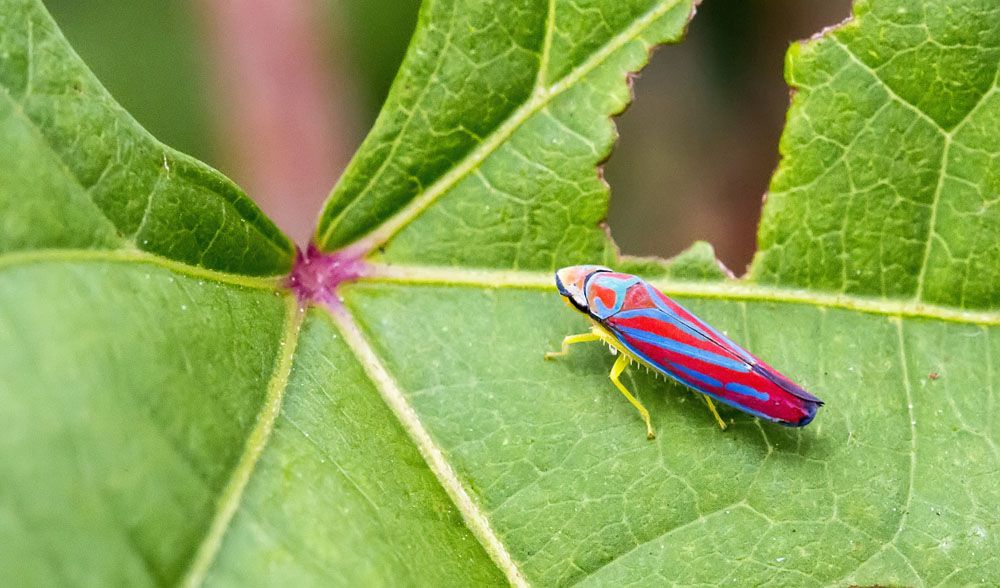
Candystripe Leafhopper – Graphocepahla coccinea
Candy Striped Leafhopper: Appearance, Territory, Damage and Life
Latin name: Graphocephala Coccinea
Appearances: A species with a lot of variation that is easily confused with species across its range. It is often a vivid blue to green species with two to three bright red bands that vary in boldness across the forewings and on the pronotum. The head and underside of the body are a mild to brilliant yellow, while the scutellum is typically orange. Around the top of the face, past the eyes, is a wide black stripe. In very striking specimens, the dark markings at the top of the face may spread throughout the entire face and even reach the top of the head in a bold outline. The top of the head may also have orange or red pigmentation.
Host plants: Red-banded leafhoppers consume Scotch broom, crape myrtle, rhododendron, and other ornamental plants as well as fruit shrubs and roses.
Territory: A species of vividly colored leafhopper native to North and Central America, from Canada south to Panama, is called Graphocephala coccinea. It lives in meadows and woodlands.
Damage insect caused: By sapping the liquids from these plants, they might harm them in some way. The Candy-striped Leafhopper can release bubbles of liquid excrement from its abdomen after eating enough. This fluid is particularly alluring to a variety of other insects, including wasps and flies, and it retains some of the sweetness from the plant’s juice. This leafhopper injects saliva while using its mouthpart to puncture and sip plant sap. To oak, elm, sycamore, and other trees, it can spread Pierce’s disease or leaf scorch.
Life cycle and habits: After mating and feeding, leafhopper adults normally emerge in the spring and lay their eggs in the veins, shoots, and stems of leaves. About ten days later, the eggs hatch. Nymphs have no wings, but as they mature and molt, they progressively develop wing pads. A month later, adults start to appear. Without raising or interaction with an adult, nymphs of this species cannot be recognized from nymphs of other species in this genus. They are a light white to cream color with yellow edges. Later instars develop red stripes on the dorsum and a deeper yellow color. This species comes in a variety of forms, suggesting that there may be several cryptic species. For more details on this species’ taxonomic history, see the notes.
